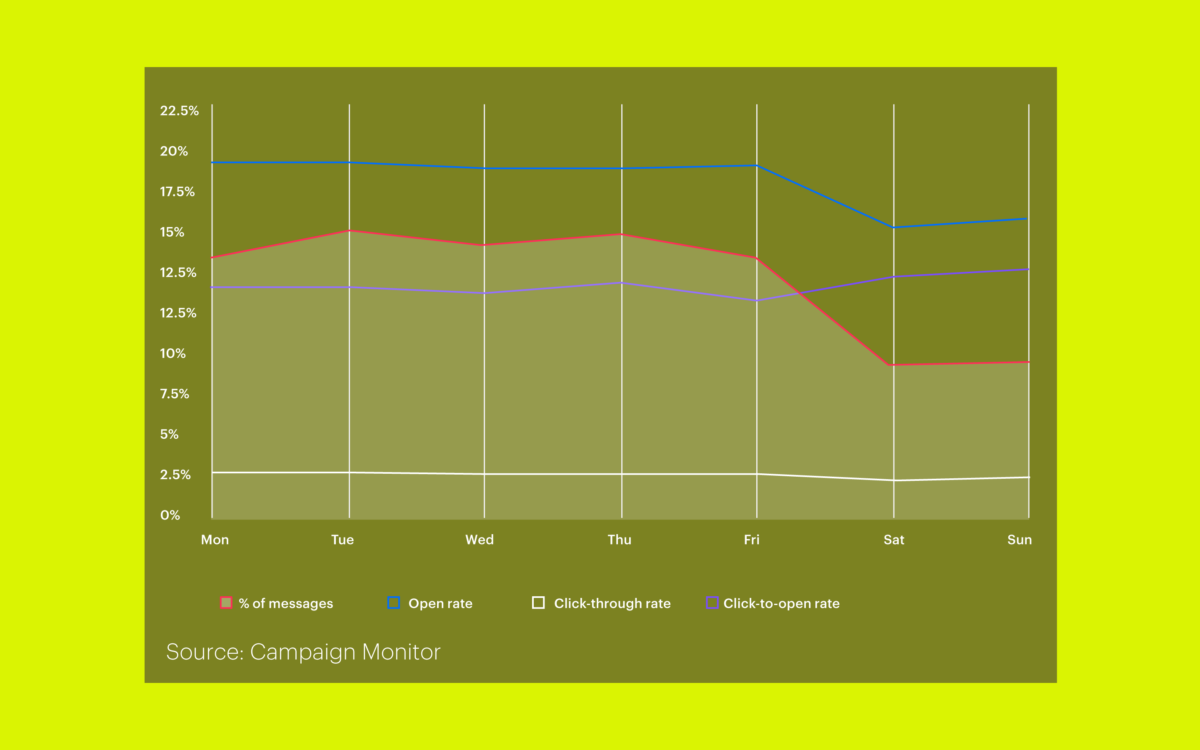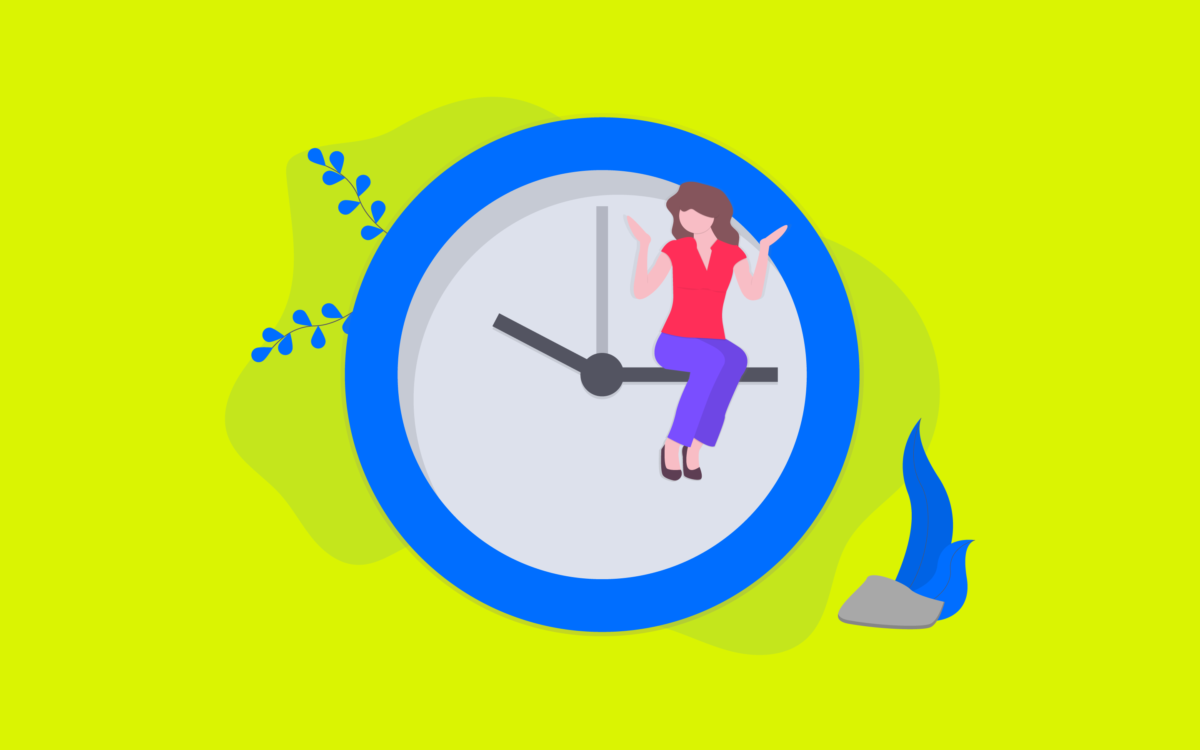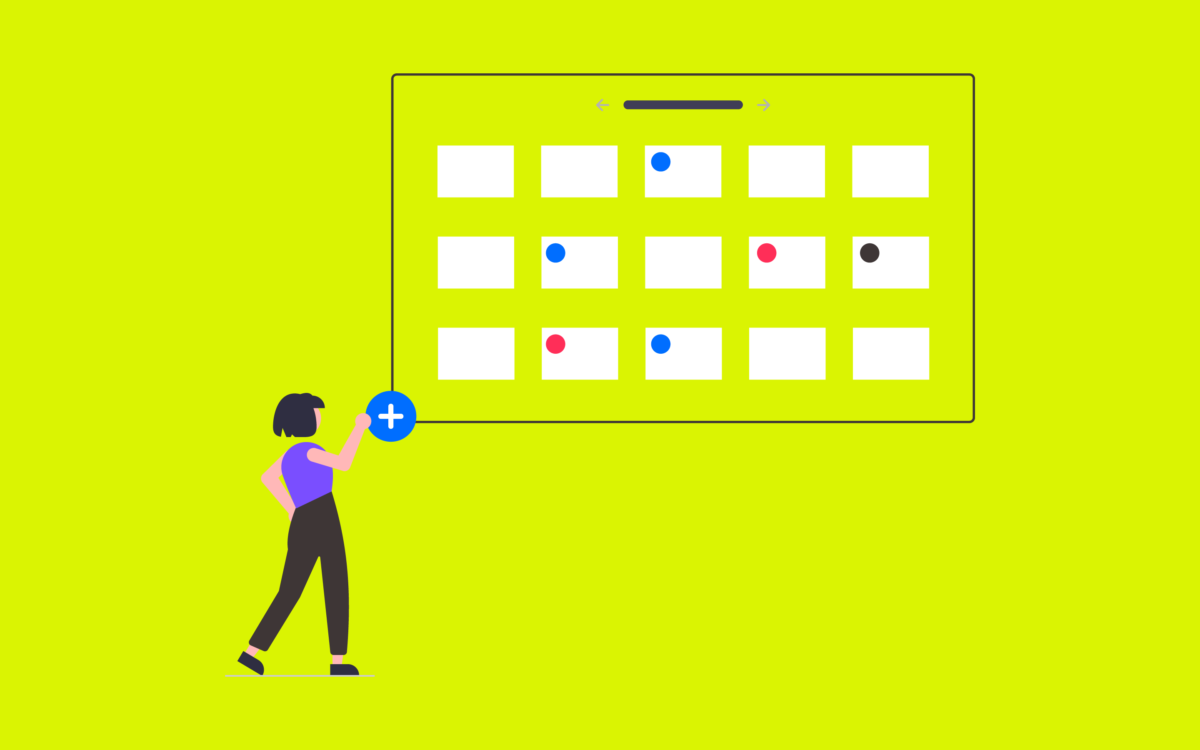The best time to send email campaigns: What is it?

When’s the best time to send email campaigns? Ultimately, there isn’t one. At least, there’s no single time and day for every business and email type.
As unsatisfying as the answer might be, the truth is finding the best time to send an email is much tougher than it seems.
As a business leader or marketing professional, you already know sending your messages to customers at the perfect moment comes with a lot of advantages. Getting timing just right ensures you can capture customers when they’re already active in their inbox.
More importantly, the right timing means you connect with clients at the perfect moment in the buying journey – just when they’re ready to convert.
Unfortunately, with so many different things affecting your email marketing strategy, like what kind of target audience you have, and which niche you belong to, there’s really no one-size-fits-all answer.
Fortunately, you can set yourself up for the best chances of success with a few simple steps.
Today, we’re going to show you how you can find the best time to send email campaigns for your specific brand and audience.
Let’s begin.
When is the best time to send an email campaign?
Choosing the best time to send email campaigns means understanding which days are most likely to generate positive responses, which times your clients are online, and more. You also need an understanding of which order you should be sending emails in.
Some companies even schedule their campaigns around specific periods in the year.
To get you started, let’s begin with the best times to send emails.
The good news for today’s business leaders is there are tons of articles out there exploring this question. The bad news is not all the studies give the same suggestions.
GetResponse tells us the ultimate best time to send an email is 10am (any day), followed by 1pm, or 6pm. The best day to send a newsletter appears to be either a Saturday or Sunday.

Klaviyo suggests sending emails on weekdays will actually lead to better open-rates, and CoSchedule used its research to discover a bunch of best times to send emails. Like GetResponse, CoSchedule agrees 10am is an excellent time for open rates.
However, the company also recommends sending emails at 8pm, 2pm, or 6am too.
Confused yet?
There are so many different answers to the question “when is the best time to send an email campaign” you really can’t pick just one option. The best thing you can do is conduct your own research.
Just because HubSpot tells us the highest click-to-open rates happen at 10am, doesn’t mean this will be the case for everyone. Usually, 10am is a good choice for B2B emails, when your clients are likely to be checking their messages at work.
However, the same rules might not apply if you’re reaching stay-at-home moms or teenagers at school.
What are the best days to send emails?
When it comes to the best day to send a newsletter, we think Campaign Monitor’s study is a pretty good starting point, because it considers the different industries, and the impact niche has on email.
According to Campaign Monitor, marketing agencies get the best results on Wednesdays or Tuesdays, and the best days for open rates overall are often Tuesdays.

The day you choose for your email marketing campaign depends on what you want to accomplish. For instance, emails sent on Wednesday in this study had the lowest bounce rates.
GetResponse found the best days to send emails doesn’t just depend on intent and industry. The location (where you are geographically) of the email sender matters too. Overall, Thursdays had the highest open rates in GetResponse’s data, and they were the most popular day to send emails.
Weekends weren’t a great option for most companies, as it’s often when customers avoid the inbox.
In the US and Canada, the best hour for open rates was oddly around 4am, while click-through rates soared at 6am. The best day to send an email in this region was Friday for open rates, or Tuesday for click-through rates.
Of course, not all of the studies agree on the best days to send emails. SendinBlue’s studies indicate emails sent on Saturdays and Sundays have the highest open and click rates. HubSpot felt Tuesday was the day with the best results, followed closely by Wednesday, and Monday.
What’s really the best time to send an email?
So far, we’ve covered a lot of different studies from email marketing leaders, but we still don’t have a direct answer to the question “when is the best time to send an email campaign?”
If you add up the data from a bunch of the most highly regarded reports on the market, you’ll see there’s no full consensus on the exact day or time which works best.
Most companies agree click and open rates tend to decline towards the end of the week – which might be because your customers are trying to “switch off”. However, you could find your customers act completely differently to this and do all of their email-based shopping on Saturdays.
Though the benchmarks available online offer a helpful insight into where you can begin looking for answers about the best days and times to send email, they don’t agree on one option. What we really discover by looking at all of this data is you need to do your own research.
By examining the research, we’ve come up with a few best practices which should work for most companies:
Don’t waste daylight
As tempting as it can be to sort out your email campaigns during the last few hours of your workday, you shouldn’t be sending them too late. Ultimately, most people are going to check their messages when they first wake up, and through the early hours of the day at work.
Stick to before 6pm if possible.
Give your readers time
About 23% of emails are opened in 60 minutes of them arriving in the inbox. However, there are plenty of people who won’t open your emails until much later. If you have an upcoming event in progress, like a sale, give people a chance to get the information.
Send the message a few days in advance.
Avoid Mondays
No-one likes Mondays, right? Although its tiresome companies do get good open and click results on Mondays, most don’t. If you’re appealing to professionals or B2B clients, then Monday is going to be the worst day for you.
People will be too busy dealing with work to handle their email accounts.
Weekdays are probably better than weekends
Again, there are outliers to this rule. However, weekends are usually when most of your customers are going to be out and about, getting things done. The majority of consumers won’t bother to check their emails on these days – particularly in the B2B marketplace.
Experiment with Tuesdays, Wednesdays, and Thursdays
The perfect day for you will depend on your business, but these three days seem to stay on top for most industries. These days avoid the weekend, the madness of Monday, and the lack of focus people generally have on a Friday.

How to find the best time to send marketing emails
Now you know the basic practices and best time to send email campaigns, you can begin conducting your own experiments. Using the benchmarks, you’ve researched about your industry, you can start with a basic idea of what might be the best times to send emails, such as 10am on a Tuesday.
Your email marketing software will collect some useful information after this about open rates, click-throughs, and other metrics which help you to make a decision. For instance, the average open rate according to Campaign Monitor is around 17.92%.
If your open rate is lower, you might decide to turn the clock on your sending time forward or back an hour.
A good way to conduct tests is to split your audience into different groups. Make sure each group shares the same characteristics and receives the same email. You should only ever test one variable at a time when examining the best times to send emails.
Rather than choosing times to test randomly, use the benchmarks in your industry and what you already know about your audience as guidance. If you know your customers are B2B clients then you might prefer to send emails during working hours.
If your customers are stay-at-home parents, they might check their emails before school runs.
A good trick is to use the engagement and activity levels you can see from your social media and website analytics. If you have the right tools installed into your website, such as Google Analytics, you can see which times customers are most likely to be active on your site.
If they’re browsing your site, there’s a good chance they have their email inbox open too.
Alternatively, you can check the built-in analytics on your social media platforms like Facebook and Instagram. These also track when your customers are most active and engaging with your content.
Using this data shows you when your clients are already online, and more likely to be connected to their email accounts.
Bonus tips on the best time to send an email
As mentioned above, the industry benchmarks available from other major email marketing companies are a great way to launch your own personalized tests. However, don’t be limited by this information alone.
Remember, if everyone knows Tuesday Wednesday and Thursday are the best days to send emails, it also makes these days more competitive.
If your clients subscribe to multiple business newsletters, and you send your message on a Tuesday along with 15 other companies, you’re more likely to disappear among the clutter.
Changing your efforts to connect with clients on a day or at a time not recommended might seem crazy, but it could also help you side-step the competition.
Another point to remember is the best time and day to send emails can sometimes depend on devices too. Your average desktop user is more likely to be active and checking their email through the day, when they’re working.
On the other hand, smartphone users will check their messages during lunch breaks, at the beginning of the day, or even late into the evening.
While most experts recommend not sending emails on a weekend, this might not be the case for mobile users. Smartphone fans are usually active on their devices throughout all hours, including the evenings and weekends.
Studies tell us around 1.7 billion users check email on their phones. This compares to only around 0.9 billion people on the desktop.
Depending on your audience and their preferences, your best time to send an email might be completely different to what we recommended above.
When considering your schedule and timing, think about the following tips:
- If you’re targeting young, tech-savvy smartphone users, you might want to ignore the advice about emails and weekends. Sending messages at these times could be ideal for reaching younger audiences who are online more often.
- Friday could be an excellent choice if you’re in the entertainment industry. People looking for things to do on the weekend could already be online and checking their emails.
- Weekends aren’t always off-bounds. If you’re trying to connect with people who like to keep their smartphones active and connected to their email at all times, then you can send messages virtually any day or time.
Don’t forget to adjust your timing to your audience’s time zone too. It’s easy to forget your main customers might not be in the same country as you.

When is the best day to send a newsletter?
Everyone wants to find the ideal day or time to send a marketing email or campaign. However, the unfortunate truth is there’s no one-size-fits-all answer. The best times and days to send emails will depend on your audience.
While there are certain days and times more recommended by larger email marketing communities, it’s easy to go against the curve.
The only people who can reliably tell you when customers are most likely to respond to your emails are your clients. This is why you need to examine your options carefully and do your research.
Start by experimenting with times based on what you know about your industry and audience. Also, conduct A/B testing experiments. Remember, only test one factor at a time.
Though it may take a while to find the perfect sweet spot to encourage opens, clicks and conversions, it’s worth the effort. Gradually, you’ll get a better picture of when your clients are online and ready to interact with you.
From there, you can create a more consistent schedule about how to reach your target audience.
Fabrik: A branding agency for our times.
Now read these:




















